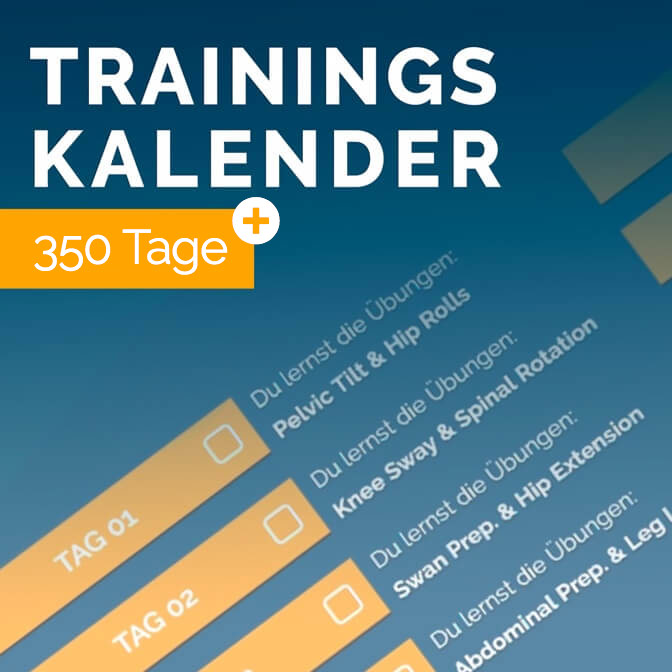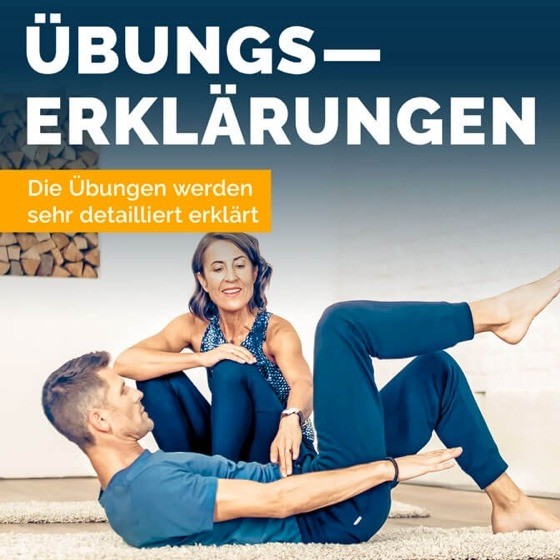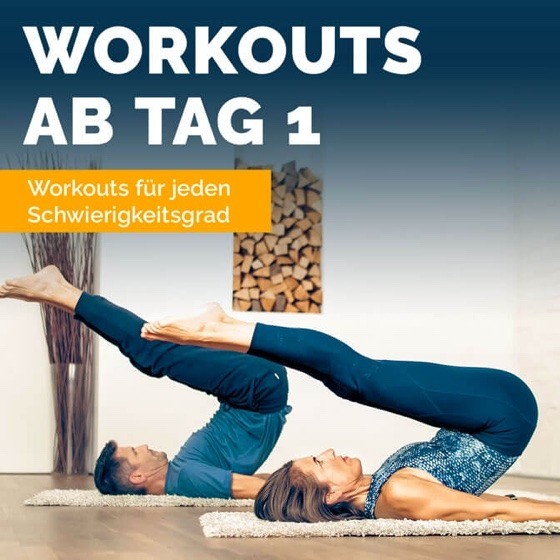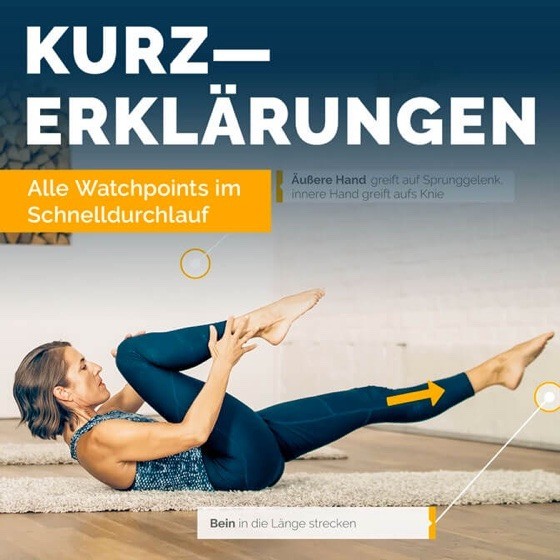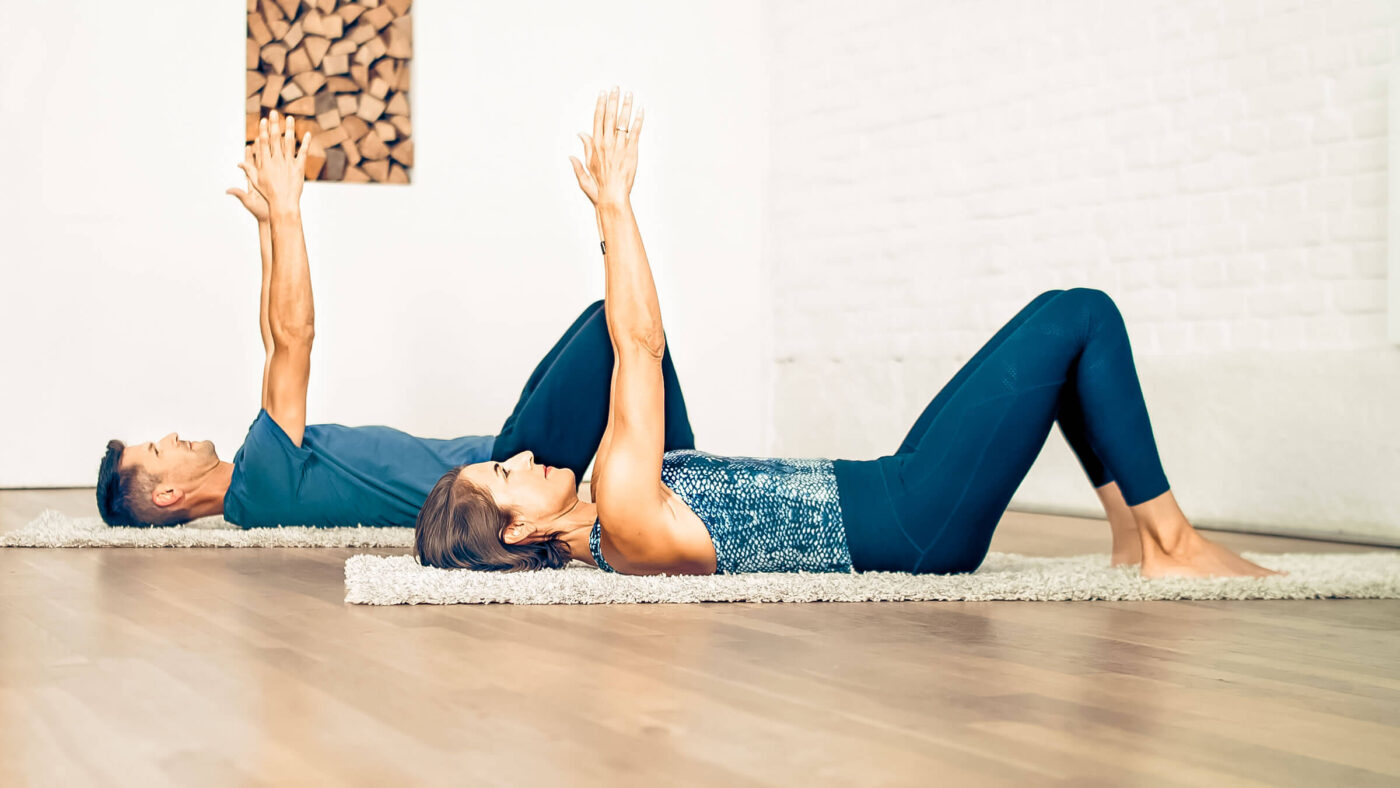
Pilates exercise of the month
Shoulder Girdle Placement
Pilates exercises against shoulder pain
01 September 2022, by Maria Felsner
Content
- Our shoulder joint
- Pain in the shoulder area
- Shoulder Girdle Placement
- The rotator cuff
- The cause of shoulder pain
- Exercise Elevation Depression
- Exercise scapula isolation or protraction retraction
- Exercise Arm Circles
- The aim of these exercises
- Help with shoulder pain (Video)
- Conclusion
- Other articles that may interest you
Our shoulder joint
Many people are not aware of how delicate and flexible our shoulder joint is. It is only when pain or restrictions occur that people begin to concern themselves with the shoulder joint.
In order to prevent the pains and limitations, or even to relieve chronic pain, maybe even to dissolve it completely, there is a simple but very efficient sequence of exercises that I would like to present to you in this article.
Pain in the shoulder area
When searching for the causes of shoulder pain, limited mobility and headaches, we end up with the muscles around our shoulder joint and between our shoulder blades, among other things.
Often, tendonitis or bursitis (Bursitis) can be the reason for pain. In the worst case, such an inflammation can lead to an "impingement syndrome" or a "frozen shoulder".
Therefore, our primary goal should be to prevent shoulder pain or resolve the pain if impairments are already present.
In most cases, this can only be achieved through targeted exercise.
Shoulder Girdle Placement
The exercise sequence Shoulder Girdle Placement is composed of the functional exercises "Elevation Depression", "Scapula Isolation" and "Arm Circles".
These 3 exercises...
- organize the shoulder girdle for optimal alignment,
- straighten the upper body,
- make the connection to the hull,
- relieve neck tension and
- prevent most headaches.
Before we go further into these three exercises, I want to give you a little insight into the anatomy of the shoulder joint.
The rotator cuff
In the above mentioned exercises an important cuff is involved, namely the rotator cuff.
All images from: Anatomography, CC BY-SA 2.1 JP, via Wikimedia Commons
Since the rotator cuff wraps around the entire shoulder joint like a kind of cap, it is also called the muscle-tendon cap. The 4 associated muscles, m. supraspinatus, m. subscapularis, m. infraspinatus and m. teres minor, are responsible for almost all movements that we perform in everyday life.

Musculus supraspinatus in action,
Animation from: Young Lae Moon, CC BY 3.0, via Wikimedia Commons
The cap-shaped broad deltoid (Deltoid muscle) covers the quartet and holds the humeral head in the very shallow socket of the scapula.

Front view of the deltoid muscle,
Image from: Anatomography, CC BY-SA 2.1 JP, via Wikimedia Commons
We find the use of these muscles in many sports such as swimming, tennis, or ball sports that involve overhead movement.
It is important not only to exercise these muscles, but also to mobilize, stretch and also relax them.
The cause of shoulder pain
Why is the shoulder joint in particular so prone to pain? And why should we prophylactically exercise our shoulder joint?
Since our shoulder joint is a muscularly secured joint, unlike the hip joint, the muscles around it need to be strengthened.
The shoulder joint offers the greatest range of motion of all human joints. The disadvantage of this is the associated lower stability, which can lead to a dysbalance especially during rotational movements.
If we lack stability, the worst case scenario can be dislocation ("Cone out") of the shoulder or also to tears in the tendons as well as muscles come.
Degenerative processes such as osteoarthritis can also be forced via a dysbalance.
Impingement syndrome is another possible cause of shoulder pain. When the shoulder joint is misaligned, tendons and bursa can become impinged.
Through special Pilates exercises such as. Shoulder Girdle Placement, Knee Lift, Leg Pull, Protraction Retraction in quadruped stance, Shoulder Roll, Shoulder Screw, among other things, the shoulder muscles are not only strengthenedbut also in their Mobility supported.
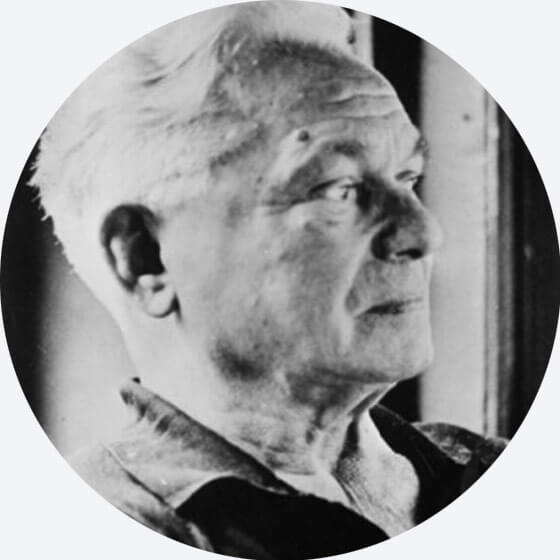
"Change happens through movement and movement heals."
JOSEPH PILATES
Exercise Elevation Depression
Execution of the exercise Elevation Depression
Most often we perform the Elevation Depression exercise in the supine position, as this allows us to better perceive the sliding of the shoulder blades via tactile feedback from the floor.
We also make sure that the pelvis and spine are neutral during the exercise.
The legs are placed and the feet are anchored to the floor at hip width.
It is now important to feel whether the hands can rest flat on the floor next to the body and that the head is not overstretched backwards. If this is the case, simply place a flat pad under the head and position the arms a little further away from the body until it feels good.
Now experiment with the movement of your shoulder blades:
- Inhaling pull the shoulder blades, thus also the shoulder girdle, towards the ears. This is the Elevation.
- On the exhale, let the shoulder blades slide back, away from the ears further down, until you notice a stretch in the neck. This is the Depression.
Avoid rounding your shoulders forward as you slide down.
You can apply gentle pressure against the floor with your hands during the exercise, as long as your chest does not rise or your head moves along with it.
Exercise scapula isolation or protraction retraction
Execution of the "Scapula Isolation" or "Protraction Retraction" exercise
This exercise is also usually performed lying down, but can also be done sitting or standing.
Experiment with your shoulder girdle as well as your shoulder blades during this movement.
Protraction:
- As you inhale, release your shoulder blades from the mat to create more space between them.
- On the exhale, return the shoulder blades to the neutral position, feeling the collarbones open.
Breath Variation: You can also release your shoulder blades from the mat on the exhale to create even more space between your collarbones and front chest with the inhale.
Play with your breathing and notice how the change of breath affects the movement.
Retraction:
- You can gently lower your shoulder blades into the mat on an inhalation, allowing the tips of your shoulder blades to gently strut together.
- On the exhale, drop the shoulder blades back to the neutral position.
Breath variation: Here too, play with your breathing and notice how the change of breath affects the movement. You can gently press your shoulder blades into the mat while exhaling and become more aware of the muscles between your shoulder blades.
But make sure you don't get too active and your head moves along with it.
The movement may only take place in the shoulder area. The torso and head remain still.
Exercise Arm Circles
Execution of the exercise Arm Cirlces
Again, the starting position is supine, pelvis and spine are neutral. Keep the knees bent, feet anchored hip-width apart on the mat. Bring the arms long to the sides with the palms facing down.
Attention: If you have shoulder pain or limited movement, place your fingertips on the shoulder girdle to reduce leverage.
- Inhaling stretch the arms/elbows towards the ceiling and upwards, but only as far as the connection between the abdomen and the shoulder blade and the contact from the ribcage to the mat can be maintained.
- On the exhalation, bring the arms/elbows back parallel to the head and continue to circle the arms over the side to the hips. Inhaling return to the ceiling and continue to circle over the exhalation.
¼ of the movement goes via inhalation, ¾ via exhalation. However, if the breathing irritates you, just let it flow.
Change direction after a few repetitions.
The aim of these exercises
As we now know, stabilization of the shoulder blades as well as the entire shoulder girdle is as important as mobilization and relaxation of this region. When stability is lacking, there is a tendency to overload the neck and shoulder muscles, especially during exercises such as Side Bend, Push Up or Leg Pull.
Therefore, always pay attention to the stabilization of the shoulder blades, regardless of whether the arms and spine are moved or not.
Since the shoulder blades have no direct bony connection to the thorax and spine, they are very mobile. This has the advantage of allowing the arms a greater range of motion. They slide up when we raise our arms, down when we lower them, in and out, and also up or down when we rotate our arms.

Pro Tip from Maria - Important
Throughout the shoulder girdle should always...
- maintain a sense of stability, not stiffness.
- Shoulders should not be excessively rounded forward or completely compressed backward.
- The width of the shoulder girdle should be kept even on the front and back.
- The shoulder blades should rest flat on the back of the chest and be able to slide over it without detaching from it.
Conclusion
Always remember that the shoulder blades respond to movements of the arms and thoracic spine.
Also be aware that the neutral position of the shoulder blades may differ from your natural resting position.
During training always get an ideal starting position, which is suitable for your anatomy. If at the beginning of the training it deviates too much from an optimal alignment, observe how the muscles continue to adapt positively thanks to the efficient training.
Also be aware that we tend to become rounded in the upper back as we age. This is not only bad for breathing, spinal stability and gait, but also for your physical appearance; in short, it makes you look several years older.
Final task:
Observe in your environment whether a vital, fresh appearance depends on whether the person is well dressed, slim and beautiful or whether an upright posture is the deciding factor.
You'll be amazed at the impact posture has on a person's overall appearance and even self-confidence.
Try it out and don't get hung up!
Do you want to improve your posture as well as your self-confidence? Then practice Pilates regularly. Our Pilates Online Training supports you optimally.
Other articles that may interest you
Detailed exercise explanation with video:
Pilates exercise Shoulder Girdle Placement explained
Articulation of the spine: what does it mean? And what does it bring?

